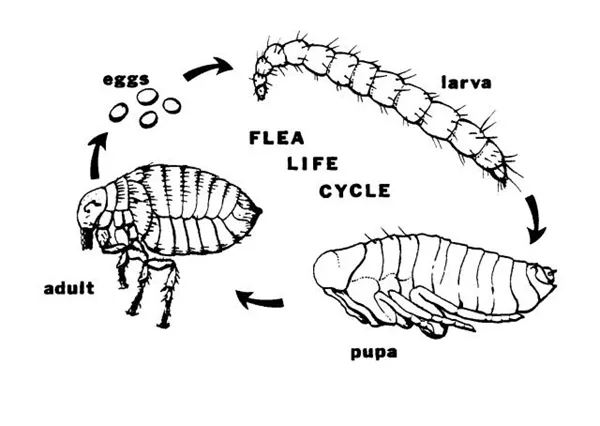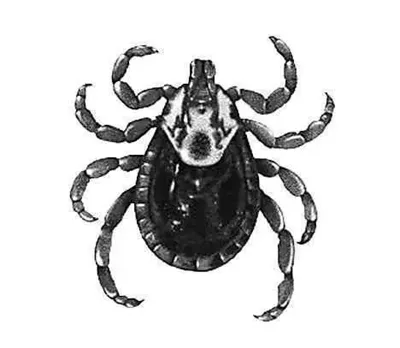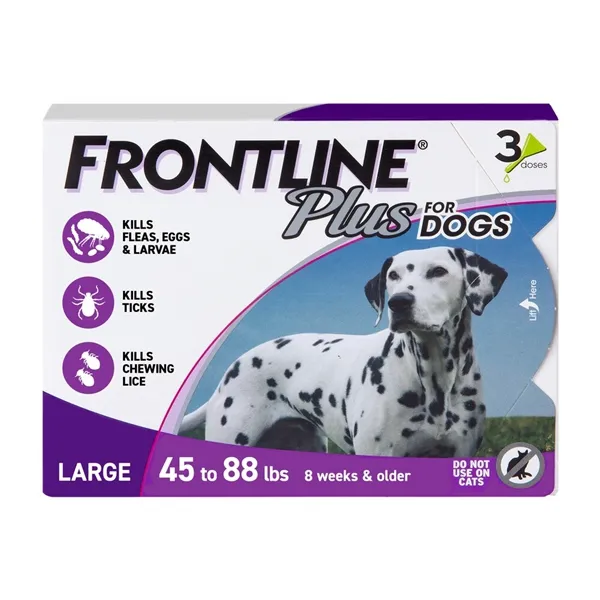Spring has arrived, and as the weather warms up, it’s peak season for parasites to thrive. For dog owners, this season brings a higher risk of fleas, ticks, and other pests infesting their furry friends.
But don’t worry—here’s a guide on how to implement holistic flea and tick prevention for dogs effectively and efficiently.
Table of Contents
What are the common external parasites in dogs?
Fleas, ticks, and mites are among the most common external parasites that infect dogs.
Fleas and ticks, in particular, act as carriers for zoonotic diseases, transmitting pathogens between animals and humans. Let’s dive into why these pests are such a problem:
Fleas
- Fleas belong to the order Insecta and have a hard exoskeleton capable of withstanding up to sp90 times their body weight. To put this into perspective, if humans had similar exoskeletons, we could leap from a height of 1,000 meters and land unharmed.
- Their powerful hind legs allow them to jump 350 times their body length—equivalent to a human leaping the length of a football field.
- A single flea can lay 25 eggs per day, which hatch into larvae within two weeks. Adult fleas can survive without feeding for up to two years.

Ticks
- Ticks, also known as hard-bodied ticks, fall under the superfamily Ixodoidea. They latch onto pets’ skin or hide in grassy areas.
- Adult ticks measure 2–10 mm in length. When unfed, they resemble sesame seeds or grains of rice; after feeding, they can swell to the size of a pea.
- Ticks at all life stages (larvae, nymphs, adults) feed on blood. They prefer thin, hard-to-reach areas of the skin (e.g., ears, armpits). A female tick can lay hundreds to thousandsof eggs in her lifetime.
If your dog scratches excessively or rubs against furniture/walls, check for parasites. Part their fur to look for tiny black specks (flea dirt) or visible pests. Early detection and action are key to keeping your dog—and your home—parasite-free!

What are the methods to remove fleas and ticks for dogs?
Lemon Juice Spray
- Preparation: Mix lemon juice and warm water in a 1:1 ratio. Pour the solution into a spray bottle and apply evenly to your dog’s skin and fur for three consecutive days. Alternatively, cut a fresh lemon into four pieces, steep in boiling water overnight, then use the lemon-infused water as a spray.
- Limitations: Limited effectiveness against fleas and ticks; may not fully eliminate infestations.
Medicated Bath
- Process: Use specialized anti-parasitic shampoo or solution for a full-body bath. Avoid contact with the dog’s eyes, ears, and mouth.
- Drawbacks: Time-consuming and potentially stressful for pets. Some chemical ingredients may cause toxic side effects, making this method unsuitable for puppies.
Topical Parasite Treatments
For targeted parasite control, products like Frontline®, Revolution®, and Advantix® are widely recommended. Among these, Frontline Plus (spot-on drops or spray) is particularly effective. Here’s how to use it:
Frontline Plus Spot-On Drops

- Applicability: Safe for dogs over 8 weeks old, including pregnant or nursing dogs.
- Dosage:
- Large dogs: 20–40 kg
- Medium dogs: 10–20 kg
- Small dogs: Under 10 kg
Choose the correct dose based on your dog’s weight.
How to Apply:
- Part the fur at the base of the neck (near the spine) to expose the skin.
- Apply the entire contents of the pipette directly to the skin, not just the fur. The medication spreads via the sebaceous glands to kill fleas and ticks when they bite.
Avoid bathing your dog 72 hours before and after application to ensure efficacy.
Frontline Spray
- Applicability: Safe for puppies over 2 days old, pregnant dogs (over 2 months), and nursing dogs.
How to Use:
- Work in a well-ventilated area with your dog’s fur dry.
- Spray 10–20 cm away from the coat, targeting the skin and fur. Brush the fur backward to reach the roots. (Avoid the eyes and nose. For the face, spray onto a cotton pad first, then gently wipe the area.)
- The spray can also treat indoor hotspots (e.g., carpets, furniture crevices).
Efficacy:
- Spot-On Drops: Kill flea/ticks eggs and prevent infestations.
- Spray: Targets adult parasites. For severe infestations, combine both.
- Fleas die within 24 hours; ticks within 48 hours.
Cost:
- Spot-On (3-dose pack): ~$39.99
- Spray (100 ml): ~$30
Important Notes
- Use an Elizabethan collar after spraying to prevent licking (though Frontline has low toxicity).
- Repeat treatment after 2 weeks if needed. For outdoor dogs, apply every 3 months.
- Deep-clean your home: Vacuum carpets, wash bedding, and spray Frontline on furniture cracks.
By following these steps, you’ll protect your dog and home from pesky parasites!

How to apply holistic flea and tick prevention for dogs?
- Avoid Contact with Infected Animals: Keep your dog away from other dogs or animals known to carry fleas or ticks.
- Use Flea-Repellent Collars: If your dog tolerates it, a flea-repellent collar can help ward off pests.
- Regular Baths and Sunlight Exposure: Bathe your dog regularly and let them spend time in the sun—sunlight naturally helps reduce parasites.
- Frequent Grooming: Brush your dog’s coat daily to remove debris, check for pests, and improve skin health.
- Maintain a Clean Environment:
- Wash your dog’s bedding, blankets, and toys weekly.
- Sun-dry these items to kill parasites and eggs.
- Vacuum floors and furniture regularly to eliminate eggs or larvae.
By combining these practices, you’ll create a holistic flea and tick prevention for dogs and keep your dog healthy!









Add comment